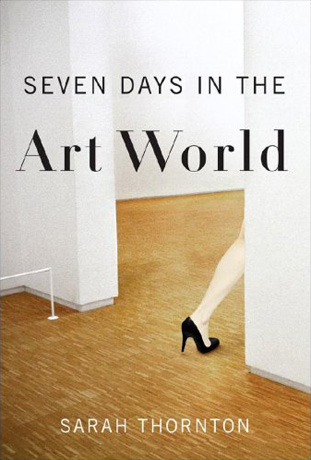Art Basel Miami Beach and the New Economy
The following is a repost of my original texts on an Artworld Salon thread regarding Art Basel Miami Beach.

In the past, my reasons for going to Miami were only partially motivated by ABMB and the various satellite fairs. There were museum openings, collections to be viewed, a whole panoply of local galleries and artists, various curated shows, book signings, concerts and outdoor events which made Miami a hundred ring circus during that heady week.
All of this will again be happening in a few days, but of course it is ultimately based on the central commercial premise of the fairs, and would not be scheduled but for that thriving center. If money is not being abundantly spent, if art is not being sold, if the top echelon of movers and shakers does not show up with open wallets, the whole house of cards can easily fall down.
Art Basel (in Switzerland) has survived previous economic downturns, but ABMB, its younger and glitzier offshoot, has not. The excesses of ABMB since 2002 have been nurtured by a continuous art boom. It will be interesting to watch a new sobriety take hold, to see if the words “sober” and “Miami” can be uttered by the art world in a single breath.
Unfortunately I will not be there to see it. For the first time in seven years I am not attending. This has less to do with the economy than with personal logistics. But apparently I am not alone. From my sources “on the ground” in Miami, I have heard that hotel reservations are down 30 percent from last year. This is a significant but unsubstantiated figure, and might apply to general tourism rather than ABMB per se. Certainly I know many curators, critics and other members of the arts intelligentsia who are attending, for the simple reason that they are being shipped down as part of the event, to serve on panels and conversations. Others are being sent to cover the event for their magazines. I have recently received hundreds of emails announcing gallery participation in the various fairs, and an admittedly smaller number announcing special events. So Miami, to be sure, will not be a ghost town.
The real variable is those who must devote themselves to a week in Miami on their own dime - the freelancers, the bloggers, even the journeyman artists - as well as smaller galleries who have put down a deposit on their booths and now, as Jonathan notes, must decide whether to double down on an iffy hand.
The one constant in Miami will be the chatter. Talk is cheap, and even without the same plethora of cash, you can bet there will be just as much talk. This year it will coalesce around a singularly interesting topic, the lack of money.
It is possible that this year will be the most democratic yet, as artists and other attendees with small budgets find cheap hotels or friends to crash with, and stay on for four or five nights, hoping to advance their careers, attend some openings and parties, and have a bit of fun in the sun. This modest forecast is certainly not the glitz, glamor and rampant consumption that was built into the original concept of ABMB, but it does suggest a sustainable model for Miami to continue as the art world's early "winter break", as a sort of art convention, a non profit sortie into community building and networking in the subtropical vacationland.
It also recalls the hotel based art fairs of the mid-1990s, when the Gramercy International (forerunner of the Armory Show) and others were established not just as market tools but as venues for experimentation, for sharing ideas, assessing the terrain, establishing professional courtesies and modes of conduct among a guild of young dealers. Growing up in public was not just allowed but expected. It was a moment of heady, nervy amateurism. With the art market in a slump, no one really knew whether these fairs would attract a collector base.
Are the smaller hotel fairs dotting Collins Avenue above Lincoln Road, or some of their cousins in the tents and warehouses of Wynwood, an indication of the humbler, gentler future of the marketplace as we move through a recession? As per Jonathan's thread opener, current expectations would have to be amended. Fairs would need to become less expensive propositions. Because at current prices, galleries cannot afford to rent large booths, ship art, pay for insurance, book hotels and flights and arrange dinners without a strong confidence in market return. But is a high octane platform like Art Basel capable of running on cheaper fuel?
If the fair no longer guarantees an A-list of international collectors, if major Europeans stay away from Miami this year, or come but don't spend, just as many Americans apparently neglected the Frieze, FIAC and Berlin fairs in recent months, then ABMB would become both more parochial and less lucrative. At some point this would preclude the participation of many leading dealers. This scaling back is obviously relative to an individual mega-gallery's cash reserve, but could quickly impact on mid-size and smaller dealers. As mentioned above, many who are sitting their booths in Miami this year had already put their money down before the full extent of the economic downturn was apparent. They would not necessarily do so now, nor going forward. Once a descending spiral like this gets started, it might eventually leave only the arrivistes and the mediocre, the carrion birds picking at the bones of a once vital world class art event.
In current practice, ABMB is not a grass roots movement but an elitist affair. It is ordained from the top down, not built from the bottom up, with the pecking order particularly exposed under its one, big, open tent. (This metaphorical invocation of the panopticon is visually realized on the catwalk of the Miami Beach Convention Center, with the entire fair spread out below, the big booths front and center, the smaller ones sorted along the perimeter.) Since almost everyone in the art world is looking for upward mobility, should sales dramatically dwindle at the top of the pyramid, among the most powerful, visible and influential dealers who show the most expensive work, a sense of diminishing possibilities will likely soon permeate all levels.
There is nothing inherently untenable in a new modesty of scale and purpose, but it would require a major realignment of the zeitgeist, a "kinder, gentler" art world. A new model would not have us look to the top of the pyramid for validation, even though that is where the all-seeing eye resides on our dollar bill. A new model would level the playing field rather than heaping the stones upward, stressing lateral, horizontal bonds of cooperation rather than vertical preening. Would this even be recognizable as an art fair? Not by current parameters. But it might lend a collective sigh of relief, a welcome chance for the art world to stop holding its breath and finally exhale.





























